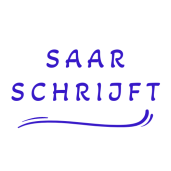Dit artikel werd oorspronkelijk geschreven voor het vak Engelse Taal en Tekst II aan de KU Leuven (najaar 2012).
Technology has been making its way into our education system for years. Only a decade ago, the number of schools which had a computer was low. Now, ten years later, not only does almost every school own multiple computers, usually even more than one per classroom, but there is already a new technological item which is making its way into many schools in Flanders. The iPad is, however, not uncontested: many wonder whether this is really the best thing to do, whether it is truly necessary to own this tablet.
There are 3 clear upsides to working with iPads. Firstly, they can be used to reduce the amount of paper that regular courses usually consume. Many publishers are already offering their manuals in an electronic version, thus targeting those who feel conscious of the environment and want to reduce their ecological footprint. Because there isn’t any paper to be paid, courses would also become less expensive. Next to that, in today’s society, electronica and technology are all around us. In working life as well, these devices are often used. Thus, training the students to use them for all sorts of circumstances can be a great help in their later life. Finally, this gadget offers a lot of new possibilities, such as more interactivity, making exercises multiple times, etc.
Some schools already use the iPad for their classes, and are very happy with the possibilities they offer. These schools are occasionally called ‘iPad-schools’, and have been used as an example of why this device should or should not be allowed, or even be made obligatory, in all schools. One of these schools is Sint-Pieterscollege/Sint-Jozefshandelsschool Blankenberge. Halfway through the year 2011-2012, this school decided that all students who studied Trade (Handel) had to buy an iPad, which led many parents to protest as they considered this to be entirely too expensive. Eventually, though, the school managed to make it legally obligatory, and from the year 2012-2013 onwards, all students are in the possession of an iPad. The reactions have turned mainly positive: “Students no longer need to buy graphical calculators or expensive software (…) they can consult their courses and manuals at any time, they get audio- and video support for languages… It’s ideal to allow each student to process the subject matter at their own rate” says Boydens, headmaster of the school (in Klasse voor Ouders, 2011).
In short, although the use of iPad’s is not favoured everywhere, it is gradually becoming an elemental part of school life. The economical and ecological upsides as well as the possibilities this item creates for the students have already managed to persuade some schools to embrace the use of the iPad. It is their succeses which have made the value of the item clear, and have thus made many other schools decide to join them in giving this a try.



